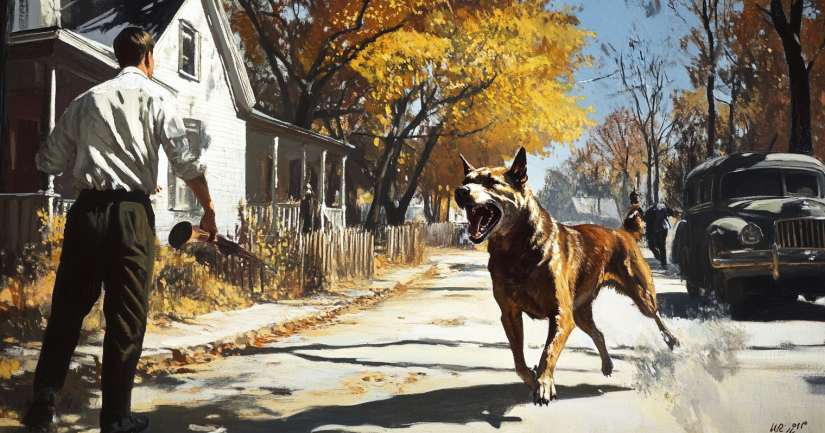Ready to test your knowledge of “To Kill a Mockingbird”? This quiz dives into Chapter 10, where pivotal moments unfold. Each question challenges your understanding of the characters, themes, and events that shape this classic novel. As you engage with the material, you’ll uncover new insights into the story’s moral complexities.
Expect to reflect on Atticus Finch’s wisdom and the innocence of Scout and Jem. Think about the lessons learned and the symbolism woven throughout the chapter. This quiz will help you gauge your comprehension and deepen your appreciation of Harper Lee’s work.
Whether you’re revisiting the book or exploring it for the first time, each question will spark your curiosity. You will discover connections you might have overlooked before. Plus, it’s a great way to prepare for discussions or essays about the novel.
Want to see what Scout and Jem face next? Take a look at the To Kill A Mockingbird Chapter 11 Quiz. And for a more thematic challenge, explore our To Kill A Mockingbird Plot Quiz to check your grasp on the story’s major twists.
Test your knowledge with the To Kill a Mockingbird Book Quiz or explore more To Kill a Mockingbird Quizzes for even deeper insights!

What Happened – To Kill A Mockingbird Chapter 10
In Chapter 10 of “To Kill a Mockingbird,” the main events revolve around Atticus Finch and a mad dog. Scout and Jem, Atticus’s children, feel disappointed because they think their father is old and unremarkable compared to other fathers. They believe he does not have any special skills or hobbies. One day, a rabid dog named Tim Johnson appears in their neighborhood. The community becomes fearful because a mad dog can be very dangerous.
Calpurnia, the Finch family’s housekeeper, warns the neighbors and calls Atticus and the town sheriff, Heck Tate. When they arrive, Heck Tate gives Atticus a rifle, asking him to shoot the dog. Atticus hesitates but eventually takes the gun. He surprises his children by shooting the dog in one precise shot. The children learn from Miss Maudie, a neighbor, that Atticus was once known as the best marksman in the county. This revelation changes Scout and Jem’s perception of their father. They gain a newfound respect for him, realizing that he has hidden talents.
The events in this chapter highlight themes of courage and humility. Atticus’s reluctance to boast about his shooting skills shows his modest nature. He wants his children to understand that real bravery is not about physical prowess but moral strength. The chapter teaches Scout and Jem important lessons about their father’s character and the true meaning of courage.
To Kill A Mockingbird Chapter 10 – Quotes
- “Atticus was feeble: he was nearly fifty.” – Scout, reflecting on her father’s age.
- “People in their right minds never take pride in their talents.” – Miss Maudie, explaining why Atticus is humble about his shooting skills.
- “Mockingbirds don’t do one thing but make music for us to enjoy. They don’t eat up people’s gardens, don’t nest in corncribs, they don’t do one thing but sing their hearts out for us. That’s why it’s a sin to kill a mockingbird.” – Miss Maudie, explaining to Scout why Atticus says it’s a sin to kill a mockingbird.
- “Your father’s right. Mockingbirds don’t do one thing but make music for us to enjoy.” – Miss Maudie, agreeing with Atticus’s lesson.
- “I wanted you to see what real courage is, instead of getting the idea that courage is a man with a gun in his hand.” – Atticus Finch, teaching Jem about true bravery.
- “Atticus, he was real nice.” – Scout, as she reflects on her father’s character.
- “Atticus is a gentleman, just like me!” – Jem, after watching his father’s humility and courage.
To Kill A Mockingbird Chapter 10 – FAQ
Chapter 10 is pivotal as it introduces themes of moral complexity and the loss of innocence. In this chapter, Atticus Finch teaches his children about empathy and understanding, particularly through the metaphor of the mockingbird, which symbolizes innocence. This lesson becomes central to the narrative, highlighting the importance of protecting those who are vulnerable.
The primary characters featured in Chapter 10 include Scout and Jem Finch, their father Atticus, and their neighbor, Boo Radley. Each character plays a crucial role in conveying the chapter’s themes. Atticus serves as a moral compass, while Scout and Jem’s interactions with Boo begin to shape their understanding of bravery and compassion.
Atticus explains that although he is skilled with a rifle, he refrains from shooting mockingbirds. He emphasizes that mockingbirds do no harm and only provide joy through their song, symbolizing the idea that it is a sin to harm those who do not deserve it. This lesson reinforces the broader moral themes present in the novel.
Chapter 10 reinforces the theme of empathy by illustrating how Atticus encourages Scout and Jem to see the world from others’ perspectives. His teachings set the groundwork for the children’s growth, urging them to consider the feelings and experiences of others, particularly those marginalized by society.
Key moments include Scout and Jem’s initial fascination with the idea of shooting, contrasted with their realization of the deeper moral implications of Atticus’s teachings. Their innocent curiosity about Boo Radley evolves into a more profound understanding of courage and kindness, marking a significant step in their coming-of-age journey.
